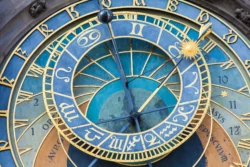Reiki has become one of the most popular alternative therapies around the world. It is administered in hospitals, drug and alcohol rehabilitation centers, nursing homes, and hospices. You can also get reiki therapy in private sessions from a highly experienced reiki master. If you prefer the “do it yourself” approach, simple Level 1 reiki training, including the Level 1 attunement, can usually be accomplished in a week or two. Level 1 reiki is all most people need to successfully perform reiki on themselves or a family member. Reiki is non-invasive and non-manipulative so it doesn’t hurt, and it can be easily administered to any willing person, including immobile, weakened, handicapped, and elderly patients.
Reiki is said to relieve stress, reduce anxiety, and help the body enter a deep state of relaxation. It is often recommended to those managing a chronic disease such as fibromyalgia, diabetes, or lupus. Sometimes too, doctors and nurses recommend reiki to patients experiencing discomfort from medical treatment such as chemotherapy or when recovering from an operation. However, when some people hear the word, “reiki,” the first question that pops into their mind is, “Does Reiki really work?” The short answer is there is a growing body of scientific evidence that proves that reiki does indeed work. Let’s explore this further.
What Is Reiki?
To get a basic understanding of what reiki is all about, the best place to start is the word “reiki” itself. Reiki is a Japanese compound word. The “rei” portion of the word doesn’t translate well into English, but it basically means universal and unlimited. The “ki” portion of the word is translated as the vital life force within us. Thus, reiki is involved harmonizing the universal unlimited vital life energy force within the human body. Bringing this energy into harmony produces powerful health benefits. Note that “ki” is basically the same concept as chi, qui, or q’i found in the teachings of many ancient non-western healing practices. Reiki is usually considered a newer type of energy medicine or energy healing since it was developed in the early part of the last century but its root concepts go back much further in time.
Next after this publicity
From a practical sense, a reiki master can restore and harmonize someone’s ki by transferring some of their own energy to a patient. The most basic way they do this is by very gently placing their hands on the patient’s body or by holding their hands very close to the body without actually touching the body. The latter reiki method is said to transfer energy through the aura of the person. It is thought that the auras of all people are interconnected, although many people have never been introduced to this part of their being. Reiki practitioners receive special training on hand placement. They also receive an attunement from a reiki master which adjusts and harmonizes their own energy fields. Professionals in the field of reiki consider attunement absolutely necessary to the successful administration of reiki.
Some people suggest that the “rei” in “reiki” connotes a spiritual being or spiritual process. Some go even further and believe that rei is a mystical ethereal spirit that cannot be completely understood by mere mortals. However, it’s important to note that the International Association of Reiki Professionals (IARP) teaches that reiki is not associated with any organized religion or any specific religious belief nor should a reiki practitioner be considered a spiritual or religious leader. In other words, while reiki may be viewed in a spiritual context by some individuals, the practice of reiki by reiki masters is never considered a faith-based practice nor is the practice of reiki a religious ritual. In this sense, the “rei” in reiki can be left open to interpretation by both the giver and receiver of reiki.
Does Reiki Work Only As a Placebo Effect?
We’ve all seen movies and or TV shows where doctors and nurses run out of pain medication and there’s no more available (think movies about wartime mash units or emergency situations). To save their patients from suffering, they decide to secretly give their patients “sugar pills” and put on an act and pretend these sugar pills are the real pain medication. At least in these fictional cases, the patient is tricked into THINKING he or she is getting the real pain killer and doesn’t feel the pain because of “mind over matter.” This is called a “placebo effect.” Given what a common theme this has been in a fictional film, it is not surprising that many people believe that reiki only works because of a placebo effect, i.e. they think that reiki is like giving someone a placebo sugar pill for pain.
Is this true? Is reiki, when it appears to work, simply a placebo?
No!!!
Next after this publicity
Luckily we now have a well respected scientific review study that addresses the specific issue of whether or not reiki works simply as a placebo effect in people who believe it will help them or whether it has an ACTUAL physical effect that can be proven by rigorous scientific study. The scientific study was published in October 2017 in the journal, “Evidence-Based Complementary and Alternative Medicine (eCAM).” This is a peer-reviewed journal with contributions from researchers around the world. It was published by Dr. David McManus, a Ph.D. and Tibetan Buddhist from Australia. Dr. McManus’ doctoral degree is in chemical engineering but he’s taken a keen interest in reiki, obtained Level 1 reiki certification, and is an astute scholar who knows how to evaluate scientific studies.
This study was a “review study” which makes it especially revealing. A review study is where a scientist reviews the available research published in the scientific literature on a specific topic. He or she then selects the studies to include in their analysis by setting forth specific criteria. He or she then analyzes all of the selected studies together to get a broader picture of what’s been discovered in the field as a whole, rather than addressing only one specific study. A well-designed review study will be very particular about what studies are included, or excluded, for analysis and Dr. McManus’s 2017 reiki review certainly falls into that category.
Dr. McManus’s paper was entitled, “Reiki Is Better Than Placebo and Has Broad Potential as a Complementary Health Therapy. A “complementary therapy” is an alternative therapy that can be used in conjunction with conventional medicine to treat the patient more holistically. Dr. McManus included and analyzed thirteen peer-reviewed studies published between the years 1998 and 2016. It should be noted that eleven of these studies involved reiki performed on humans and two of the studies involved reiki performed on rats. The reiki studies on rats were included because these studies allowed the physiological effects of reiki to be more robustly studied. The conclusions of Dr. McManus’s study should give great hope to those looking for a reliable alternative and complementary treatment to a wide host of medical issues.
Let’s delve into this important reiki review paper in detail.
How Was This 2017 Reiki Review Study Designed?
Often times, reporters and others simply read the abstract and conclusions of a scientific study without bothering to understand how the study was designed or even pay attention to the procedures that were used. However, to understand if the conclusions reached by a researcher are valid, one must first understand if the study is actually set up in a way that produces meaningful results. If the design of the study is flawed, it will give flawed results that cannot be trusted. If the design of a study is good, it will give trustworthy results.
This particular reiki review study has been cited widely by other reiki researchers, those who study all forms of energy medicine, and reiki practitioners because it was designed particularly well. Here are the key points in why this particular reiki study and its conclusions can be deemed highly trustworthy:
Next after this publicity
- Only reiki studies that could easily discern whether or not there was a “placebo effect” were included. This gets into the experimental design of the original studies reviewed. The studies included in Dr. McManus’s study all had at least one clearly defined “control group,” sometimes two, where no reiki was performed. All of these studies also included a group of participants on which “pretend reiki” was performed by an actor, untrained in reiki and not attuned. The unattuned actor would pretend to perform reiki by going through the hand motions of reiki. This is referred to as “sham reiki” in the paper. It’s important not only to compare the results of reiki to a control group but also to compare real reiki to sham reiki.
- Dr. McManus only included studies where the reiki practitioner performing reiki was formally attuned by a reiki master. This involves a realignment of ki energies within the reiki practitioner so he or she will be able to provide effective reiki, not sham reiki. An attuned reiki practitioner is also given formal training/practice in precise hand placement and overall reiki technique.
- To ensure the most statistically meaningful results, Dr. McManus only included reiki studies that involved twenty or more participants. While there are valid reiki studies that involve fewer people, some smaller studies simply can’t be statistically evaluated in any meaningful way.
- Dr. McManus limited the studies in this particular review to “hands-on” reiki and excluded “distance reiki.” In other words, only studies where the reiki had been done in person were included. Reiki that had been conducted via phone, video, or other long-distance methods were not included. This narrowed the study down to one particular type of reiki, the most traditional type of reiki, so the results would pertain to only that form of reiki. Having another type of reiki mixed in could have obfuscated the results.
- Only studies that had been published in reputable scientific journals, and had thus been rigorously peer-reviewed by other professionals in a reiki related field, were included. Unpublished data sets, anecdotal information, and other work that had not been peer-reviewed, such as Ph.D. dissertations, were not considered for the study. This ensured a high degree of quality control, not to say other forms of evidence should never be considered.
What Were the Findings of Dr. McManus’ Reiki Review Paper?
Eight of the thirteen reiki studies Dr. McManus analyzed showed definite POSITIVE results for those who received real reiki performed by an attuned Reiki practitioner. Furthermore, the reiki results were statistically significantly better than sham reiki results and for those people (and rats in two studies) who received no reiki at all. Moreover, in two of the studies where the positive effects of reiki could not be decisively proven through statistics, they still showed a positive trend with real reiki compared to sham reiki and the control groups.
These are very convincing results and should encourage more researchers to design good studies addressing the effectiveness of reiki. Please note too that some of the results showed very specific quantitative physiological data such as lower heart rate and lower cortisol levels! The qualitative data that was presented in these studies, such as how much pain a patient had after he or she received reiki versus sham reiki, was also very convincing given how painstakingly careful the data in these selected studies were collected.
Final Thoughts
Dr. McManus’ reiki review paper shows there is a great deal of scientific proof that reiki does indeed work. However, this should not preclude you from listening to anecdotal testimonies about the effectiveness of reiki. Over the eons, some of the best holistic healing practices have spread by word of mouth rather than from scientist to scientist. Reiki is not considered a treatment that can negatively impact you so it never hurts to try reiki if you’ve heard about its positive effects and want to experience it and test it for yourself. Even if you are initially skeptical, you may be pleasantly surprised like many of the participants in these reiki studies.






































